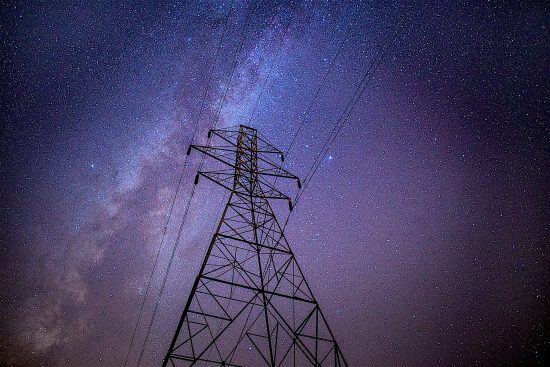
August 5, 2020
Exoplanets are not well understood.
The Ignis Fatuus is a vapor shining without heat.
— Isaac Newton
According to a recent press release, “…some of the weirdest planets…” yet discovered around other stars are the extremely hot “super-Earths”. These are rocky planets so close to their parent stars that they are “…melted seas of molten lava.”
Why they are so bright is a mystery to the establishment. Experiments with melted stone do not confirm the brightness: white-hot rock or glassified sheets are not as bright as what is observed. Their results are unexpected—what else could it be? They are left with guesswork and maybes.
A previous Picture of the Day discussed the Kepler Space Telescope. Launched on March 7, 2009 Kepler was equipped with an onboard photometer that could measure the reduction in starlight when an object passed in front of its subject stars. Its planet-hunting ability ceased in May 2013.
The High Accuracy Radial Velocity Planetary Searcher (HARPS) can resolve stellar Doppler shifts in red dwarf stars that are as little as 3.5 kilometers per hour. Red dwarfs are thought to be the most common type of star, with hundreds of them within 40 light years of Earth.
NASA’s Transiting Exoplanet Survey Satellite (TESS) discovered what they think is a young planet around an “adolescent” star. This is important to them, because they are not able to observe changes in real time. So, as theory suggests, they take “snapshots” of stars at various stages of their evolution, in order to determine how their planetary companions age and grow.
The Sun is known to be a variable star, fluctuating in output with changes in its solar cycle. That cycle lasts, on average, 22 years. What if cycles in other star systems are more rapid and more violent? It is a principle tenet of Electric Universe theory that stars are not gravitationally compressed spheres of hydrogen and helium, but are electromagnetic “pinches” in cosmic Birkeland currents.
Stars might experience more powerful and more rapid changes in the electric power that feeds them, causing their plasma sheaths to expand and contract. Those oscillations could be what astronomers are seeing, and not differences in brightness from the gravitational pull of orbiting planets. The electrical aspect can also explain the too-bright exoplanets.
Hot super-Earths all possess unexpectedly high albedos, reflecting more than 40% of the light from their stars. In comparison, the Earth’s albedo is around 30%. The albedo of a lava planet would be about 10%, which is dark compared with a 50% albedo for the new super-Earths. Jupiter’s moon Io also reveals excessively bright areas where electric arcs from Jupiter encounter its surface.
As previously noted, the Galileo spacecraft discovered that Io dissipates more than 2 trillion watts as it revolves through Jupiter’s electromagnetic fields. The electric charge flow travels along Jupiter’s magnetic field, creating lightning in the planet’s upper atmosphere, as well as intense aurorae at the poles. Areas of Io’s crust are melted and too bright, just like the hot super-Earths.
In an Electric Universe, stars and planets are connected by electric power lines called Birkeland currents. It is that powerful link that is heating the planets into incandescence.
Stephen Smith
The Thunderbolts Picture of the Day is generously supported by the Mainwaring Archive Foundation.












